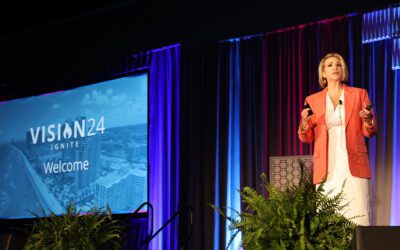Techniques to Optimize Workforce Scheduling

Your organization’s most valued resources are your employees. Despite accolades about cutting-edge technologies, innovative leadership, and dynamic organizational strategies — many companies still fall short in focusing on their employees. Perhaps it’s time to revisit the how, when, and where that affect an employee’s work. In other words, maybe it’s time to reevaluate your approach to workforce scheduling.
Some important questions to ask about workforce scheduling:
- Do employees have access to the technology that will enable them to quickly adapt to changing business needs and personal commitments?
- Are employees able to easily comply with ever-changing guidelines?
- Are employees engaged enough to remain in their positions and keep operations running smoothly?
With a record number of employees having quit their jobs during the Great Resignation, (and a quarter of them regretting their decision to leave) more must be done to show they are appreciated and recognized for a job well done. They want opportunities for career growth, and to achieve a healthier work/life balance. Optimized workforce scheduling plays a significant role in creating positive employee experiences that can help mitigate these turnover issues.
Analyze Data to Forecast Demands
The best workforce scheduling solution allows organizations to tap into historical data and turn out predictive models that can help managers determine the requisite staffing levels based on specific needs. Data-driven insights mitigate overstaffing and unplanned overtime, while also preventing errors and lower productivity due to understaffing.
With smart data management capabilities of modern software solutions, organizations can leverage the immense power of data to optimize output by accurately predicting the right amount of labor needed to meet fluctuating demands. Data can be segmented to refine forecasts by department, area, or product line. Managers must often assign employees to work specific days and/or hours. These could be weekends, holidays, rush hours, or busy seasons, as well as high traffic patterns — making it challenging for employees to know what is expected of them on a daily and hourly basis.
Maintaining a well-staffed operation can be difficult while tracking the availability of the workforce. Keeping a staff list in a secure database with information about each worker’s position, department, skills, and paid time-off patterns allows for accurate labor forecasts and easy-to-produce workforce scheduling.
Creating employee schedules that are fair, predictable, and consistent is often one of the most difficult tasks for managers. Workforce scheduling software can help by supporting more flexibility and reducing employee burnout and turnover in the process. Ultimately, effective workforce scheduling is about improving the employee experience, which can be negatively impacted by an inflexible and erratic shift scheduling process. A dynamic and responsive workforce scheduling solution can eliminate those issues.
Know If Your Employee Pool Is Engaged

Modern workforce management software is transforming the way businesses communicate, collaborate, and engage with their employees. It is redefining the concept of managing talent and ensuring workers come away satisfied.
Honing in on workers’ preferences can be a challenge when creating work schedules. Digital workforce scheduling makes managing different preferences simple and straightforward. Not with just hours and availability, but with overtime considerations as well.
The key to a great people management system is fairness, consistency, and flexibility. But how do managers ensure employees are in the roles best matching their skills, interests, and even their availability? Workforce management platforms provide a simple solution: flexible tools for efficient workforce planning and schedule optimization.
Allocate Employee Skills
The last two years have seen office workers flooded with new tools to boost productivity while working remotely. But very little of that bounty has come the way of the estimated 80% of global workers who don’t sit behind a desk — deskless shift workers. These are the workers who are valiantly manning the frontlines of a variety of industries.
Deskless shift workers are easily forgotten in a business world that puts a premium on empowering the so-called “knowledge workers”, with the deskless segment often becoming a forgotten workforce. But, during the pandemic, when acute shortages of manufacturing and logistics employees, retail staff, and healthcare workers all but paralyzed some industries — deskless shift workers quickly went from behind-the-scenes to frontline essential.
These workers, however, are used to doing tasks in a specific way within designated hours, which means sometimes there are shifts where employees aren’t fully utilized if the business needs change. This can be fixed by assigning shifts based on the best person for the job rather than relying on traditional time frames.
Many companies have found great success by staffing shifts based on employees’ skills because this practice ensures that each employee focuses on tasks within their area of expertise. Managers, thus, must perform regular assessments of employees’ skills and be prepared with an alternate if there are knowledge, ability, or equipment gaps that can affect any given task.

Communicate Effectively
When it comes to workforce scheduling, disjointed communication is fertile ground for broken operations and increased turnover to flourish. The right workforce scheduling solution with integrated communication features will enable the organization to minimize communication breakdowns.
Effective communication practices enable workers to succeed in their roles and make sure everyone in the organization is following the same strategy. This practice minimizes miscommunication, and ensures messages reach the right people at the right time consistently, effectively, and across multiple channels. Utilize mobile messaging, alerts, and broadcast bulletins so all employees can be informed across more than one location.
With workforce software that combines scheduling and communications, organizations can get mission-critical messages out to teams in advance of their shifts so employees can see them as soon as they log into the application. During shifts, important communication can easily fall through the cracks. A quick and easy way to prevent this from happening is to digitally post important notes in a centralized program hub. The more readily accessible for everyone, the better. When the shift is over, managers can go through their notes and prepare for the next day.
When employees need to make scheduling requests, record overtime, or indicate availability, a simplified digital platform makes the process much easier for all. Supervisors can also inform employees of any changes in workplace demand within the platform. When emergencies strike, app-based communication tools are an effective way to relay one message to the entire workforce quickly. However, when the communication is more personal — like performance or disciplinary-related message communicating it privately is the best practice.
Remember, just sending out a message is no guarantee it will be seen, heard, or acted on. With a proper workforce management program, you can see when directives are being received, read, and implemented.
Ensure Schedule Accessibility
Allowing employees access to schedules means they can make decisions about their own schedule, and ultimately decrease stress related to uncertainties in work hours and last-minute shift changes. With access to workforce scheduling, employees can view their schedules anywhere, increasing flexibility and autonomy.
If employees have input into their preferred schedules, they’ll likely be more satisfied with their workload. An increase in satisfied employees translates into more productive employees who are less likely to leave the company.
Be Compliant
Local and national governments are constantly rolling out new and amended legislation requiring mandatory break times, overtime scheduling, pay rates, paid holidays, and much more. Illinois’ family bereavement law was renamed from the “Child Bereavement Leave Act” to the “Family Bereavement Leave Act”. This amendment expanded the definition of family members for whom bereavement leave may be taken and includes events such as fertility-related losses, failed adoptions, and failed surrogacy agreements as reasons for employees to take bereavement leave.
Amid the flurry of new legislation, “change” is the one constant employers can always anticipate. Just a few notable topics addressed by new legislation include:
- Employee Burnout
- Compliance Best Practices
- Workplace Rights
- FMLA & FLSA Audits
- Paid Family & Medical Leave
Automated workforce scheduling can help to effectively navigate this compliance minefield.
“The twin necessities of meeting compliance obligations and maintaining an engaged workforce mean that employers must focus more than ever on their employees’ physical and mental well-being.”
Paul Kramer, Director of Compliance at WorkForce Software
Go Digital for More Seamless Workforce Scheduling
In the maze of workforce scheduling, planning, and coordinating employee time, a digital workforce scheduling solution can help to alleviate the stress that comes with these tasks. By streamlining processes into a single point of contact, companies can free up time to focus on the other growth areas of their business.
Leveraging the latest technology and adopting a digital approach to workforce scheduling makes connecting with workers seamless and helps employees have greater control over their time. A consumer-grade workforce scheduling app discovers who is best suited to be available at what times, reduces the length of time people spend hunting down work, and calculates how much they are paid to perform it.
With a fair and flexible WorkForce Software scheduling solution, it’s easier to schedule the right employee for the right job at the right time. The Workforce Suite brings together the workforce scheduling needs of employees with the marketplace demands of businesses.
Book a WorkForce Software demo today!
Subscribe to The WorkForce Blog
Learn the art and science of maintaining productive, happy, engaged employees.
Discover More
Embedding an ‘Eyes Wide Open’ Mindset Into HR Technology Selection
Gartner guides teams responsible for deciding on their organization’s next HR technology investment to set themselves up for success.
5 Workforce Management Secrets to Thrive in 2021 and Beyond
Download this eBook to learn the 5 secrets that will help your organization shift from surviving to thriving now and in the future and learn how the right workforce management solution can empower your initiatives.
VISION 2024: Ignite Conference—Day 2 Recap
The second day of VISION 2024: Ignite proved to be just as full of enriching sessions as day 1!



